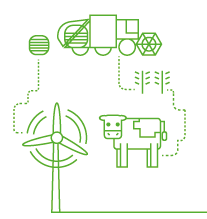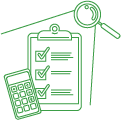In business and tax world, June 30 is a critical day of the year. In the lead up to this date, there is much planning, strategising, executing, restructuring, implementing and spending. All of this activity is for a good reason, as after June 30 many opportunities are closed for another year.
 Tax Planning
Tax Planning
Hopefully, all farmers have met with their accountant to review their expected 2020 income and profit position and calculated an estimate of tax outcomes. There will be decisions and instructions that you should start acting on now.
Bringing expenses forward – identifying those expenses that you may be able to bring into June for tax deductibility. This may include pre-paying interest on loans.
Deferring income – delaying sale of produce or livestock until July and therefore the resulting tax for a full twelve months.
Farm management deposits – deposit into FMD’s before June 30 to gain full tax deduction, these must remain in place for at least twelve months. Review last year’s FMD’s that are about to mature, consider rolling them forward a few days into early July, and then withdraw to assist with cash flow going forward.
Asset purchases - acquire planned assets that qualify for the $150,000 immediate write-off for maximum tax benefit in this year. To be eligible, these must be delivered, installed and ready for use by June 30. Just having a June invoice is not sufficient.
The above tax deferral strategies are designed to keep tax dollars in your bank account for a little longer. These all impact cash flow, so please ensure that you have carefully budgeted for this.
Superannuation
 2020 contributions must be in your superannuation fund before June 30. The maximum tax deduction is $25,000 per person, although you can now add any shortfall that you didn’t claim last year.
2020 contributions must be in your superannuation fund before June 30. The maximum tax deduction is $25,000 per person, although you can now add any shortfall that you didn’t claim last year.
For those superannuation funds in pension mode, minimum withdrawals must also have occurred by June 30. Due to the impact on investments caused by Coronavirus, the government is allowing the minimum withdrawals to be half the scheduled percentage.
Succession and Business Changes
For ease of administration, the end of financial year is usually the best time to introduce new business partners or incorporate business restructures. Planning is essential, with actual implementation requiring careful execution and timing. This may involve coordination with third parties such as your bank, solicitor, ATO and ASIC.
Technology and Software Changes
In recent years we have seen new and developing cloud-based software programs and applications designed to make administration easier, more efficient and accessible. This results in management information being more relevant, complete and available in real-time. If you are considering changing your accounting system to a cloud-based program, June 30 is the ideal time. Preparation is required beforehand to facilitate subscription, ensure digital access, set up automatic bank feeds and create an appropriate chart of accounts.
Record Keeping
 June 30 is when a snapshot is taken of your business to capture and document your financial position. As such, it is time to conduct your annual stocktake, confirm livestock numbers and tonnes/bales of produce on hand.
June 30 is when a snapshot is taken of your business to capture and document your financial position. As such, it is time to conduct your annual stocktake, confirm livestock numbers and tonnes/bales of produce on hand.
How can RSM help?
As June 30 approaches, do consider if you are adequately prepared for the new financial year and contact the RSM Agribusiness team today.

